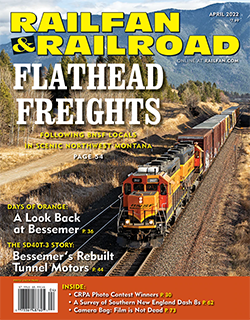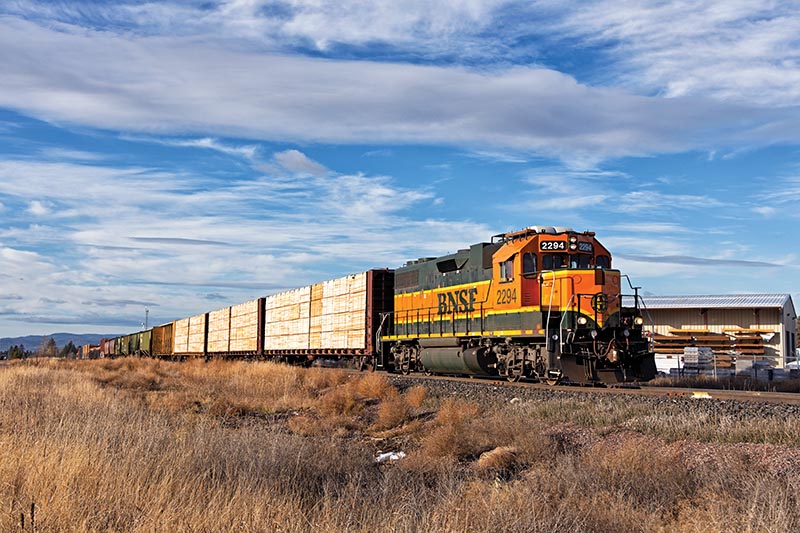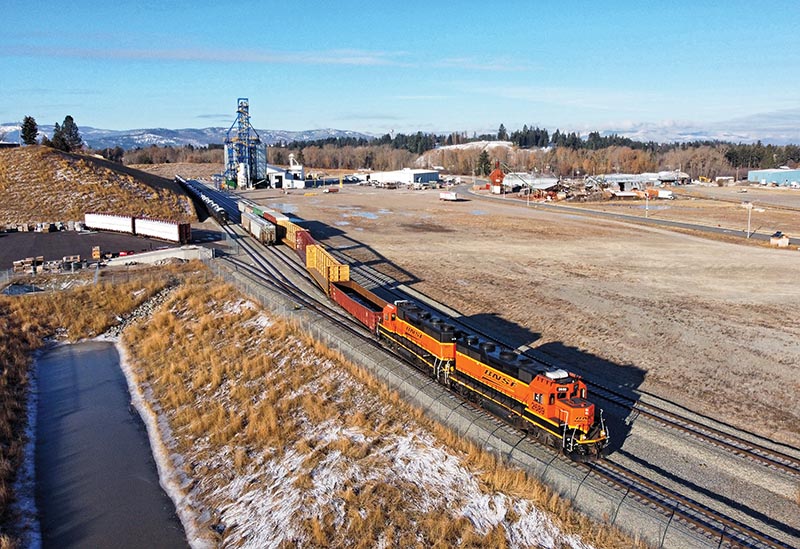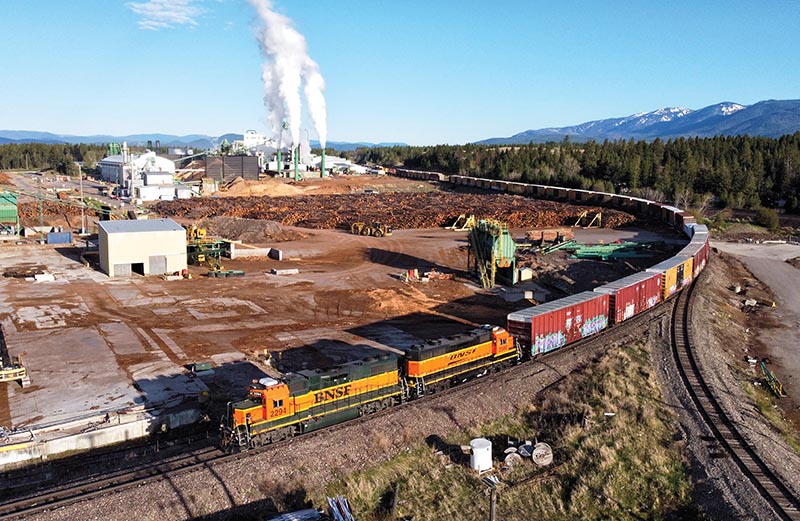 By Justin Franz/photos by the author
By Justin Franz/photos by the author
The work begins at dawn when a crew reports for duty at BNSF Railway’s small yard office near downtown Whitefish, Mont. After grabbing paperwork, the crew walks out to their power in the yard, usually a pair of EMD GP38-2s or rebuilt GP39-3s in some variation of the railroad’s Great Northern-inspired paint scheme. On most mornings, if the train is already made up, the crew can swing onto the power, do an air test, and dial up the dispatcher in Fort Worth, Texas, for permission to head east. If things are quiet, it won’t be long before they start pulling to the east end of the yard where they’ll navigate the crossovers and highball east on Main 2.
But not every morning is quiet. There might be a westbound grainer with a crew who is short on time and needs to get into the yard before they die on the law after the long slog over Marias Pass. Or there might be a hot “Z” train that left Seattle the previous evening sitting at the crew shanty — its tail end blocking crossings on Birch Point Drive and State Park Road — that will get to go first. If the delays persist, the Glacier Dispatcher might hold the local even longer, until Amtrak Train 8, the eastbound Empire Builder, has made its 20-minute station stop at Whitefish and headed east itself. Only then might a gracious dispatcher some 1,700 miles away at corporate give them the light to head out.

BNSF 2294, an ex-Frisco GP38-2, is spotting cars at Western Building Center on November 5, 2021, in Columbia Falls.
That’s how BNSF R-MON8761 — unofficially known as the Kalispell Local, the Stryker Job, the Troy Turn or, most commonly to local railroaders, simply “The Roadswitcher” — usually starts its day. Based out of Whitefish, an old logging and railroad town turned vacation destination, BNSF’s local road freight works five or even six days a week serving the timber and agricultural industries that survive here in Northwest Montana. It is almost always led by a pair of standard-cab, second-generation EMDs, a throwback to the pre-wide-cab era. While many railfans venture to this corner of Montana to enjoy the spectacle of mountain railroading on Marias Pass, not far from the internationally renowned Glacier National Park, they would be mistaken to overlook this hard-working local freight train down in the scenic Flathead Valley.
History
Before Whitefish and the surrounding Flathead Valley became the tourist destination it is today (more than three million people visit Glacier Park annually), timber and agriculture were the bedrock of the local economy. Prior to the 19th century, this lush corner of Montana was the exclusive domain of a trio of Native American tribes — the Pend d’Oreille, Salish, and Kootenai. White settlers arrived in the region in the mid-1800s, but development in the Flathead Valley was slow until Great Northern Railway arrived in the 1890s. Great Northern was little more than a granger road until it was pushed west by legendary railroad builder James J. Hill, dubbed by fans and historians as the “Empire Builder.” When GN arrived at the foot of the Rockies in the 1880s, Hill had two choices — he could purchase the struggling Northern Pacific Railway to complete his route to the Pacific Northwest or he could build his own, better line. He picked the latter, and in late 1889, surveyor John F. Stevens mapped a route over Marias Pass, on the southern edge of what would eventually be Glacier National Park. The railroad was built over the pass in 1890 and 1891 and arrived in Kalispell — the primary community in the valley and what would eventually become the county seat — on January 1, 1892. From Kalispell, the railroad pushed west into the Kootenai region, following a route similar to today’s U.S. Highway 2 toward Libby, Troy, and eventually Idaho.

The Glacier Rail Park opened in 2018 near Kalispell. The rail-served business park allowed the city to rip up two miles of track through town to build a trail. The Kalispell Local is switching on November 9, 2020.
Kalispell would be a division point until 1904, when GN rerouted its main line to pass through Whitefish, about 15 miles to the north. The old main line through Kalispell, which split from the new main at Columbia Falls, would become a branch. Although the division point was moved north to Whitefish, GN in these parts would still be known as the Kalispell Division until the mid-1960s, shortly before the Burlington Northern merger in 1970.
During the 20th century, Whitefish-based locals would regularly run down to Kalispell where the railroad served a number of industries, including a grain elevator and a lumber yard. But in the early 2000s, traffic began to dwindle and successor BNSF searched for an alternative operator. In 2004, the Kalispell Subdivision was leased to Watco Companies, which in turn created Mission Mountain Railroad (MMT). Watco also purchased another BNSF branch farther north between Stryker and Eureka. Like the 15-mile Kalispell line, the 22-mile line up north was also a main line-turned-branch line due to a reroute. In 1970, part of the line west of Whitefish was flooded due to the construction of the Libby Dam and Lake Koocanusa. That reroute resulted in the construction of the 7.01-mile-long Flathead Tunnel through the Salish Mountains…



